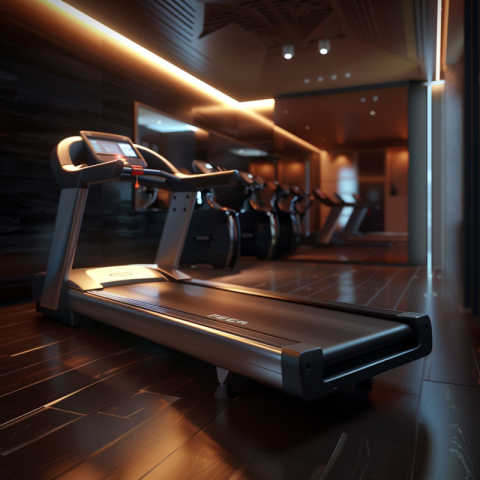
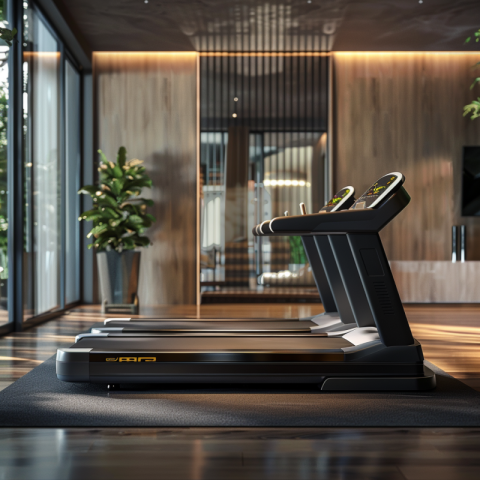
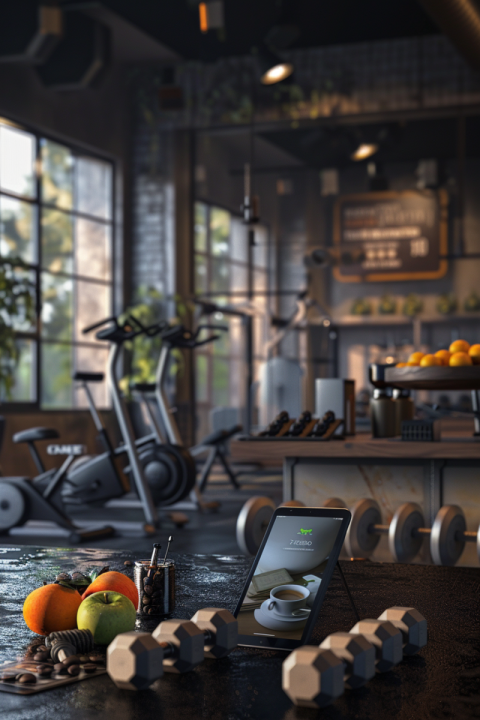




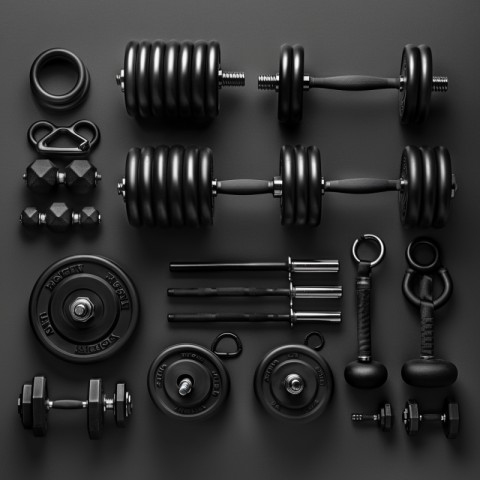
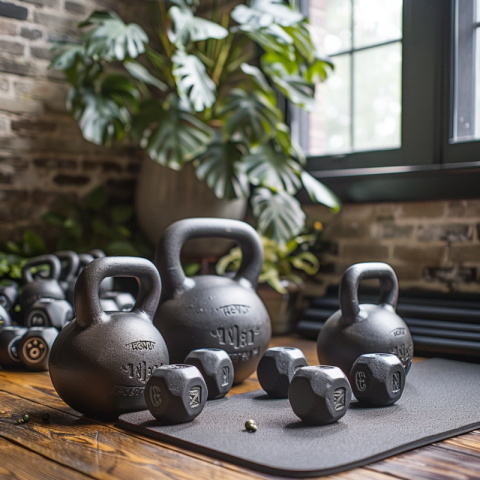
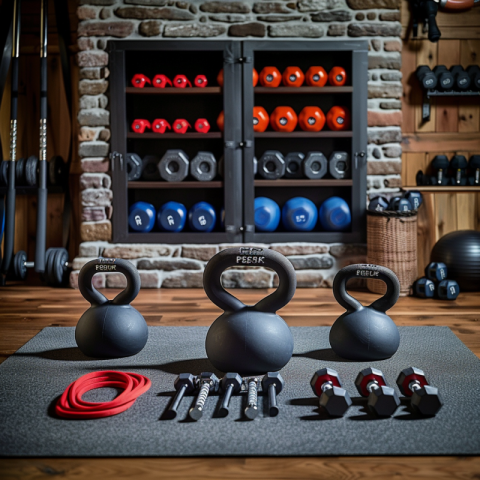
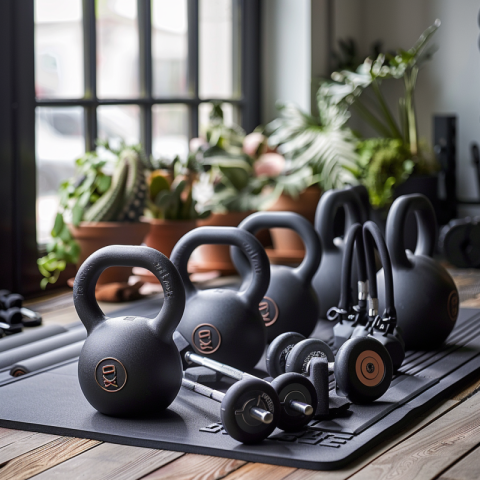
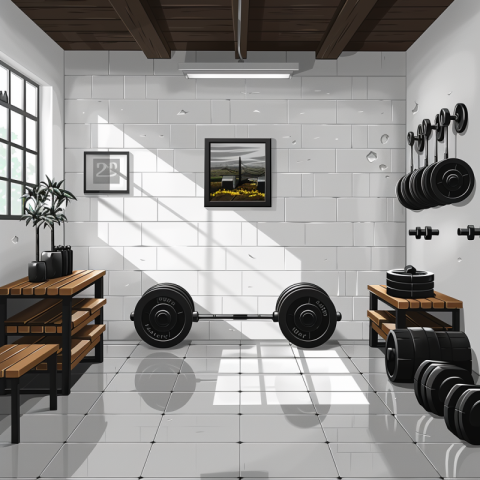
The Gym: A Place for Fitness, Strength, and Well-being - Your Fitness Hub
The gym, a dedicated space equipped for physical exercise and fitness training, has become an integral part of modern life for many people seeking to improve their health, strength, and overall well-being. Gyms offer a wide range of equipment, exercise classes, and training options to cater to diverse fitness goals and preferences. From weightlifting and cardio to group fitness and specialized training programs, the gym provides a versatile environment for individuals to pursue their fitness journey.
1. The Rise of the Gym: From Ancient Greece to Modern Fitness Centers
The concept of a dedicated space for physical training has ancient roots:
- The word "gymnasium" comes from the Greek word "gymnazein," which means "to exercise naked."
- In ancient Greece, gymnasiums were public places where athletes trained for competitions and where philosophical discussions were held.
- The modern gym concept began to emerge in the 19th and 20th centuries, with the development of specialized exercise equipment and the rise of organized fitness programs.
- The first YMCA opened in London in 1844, and these organizations played a major role in popularizing gyms and fitness activities.
- The mid-20th century saw the growth of commercial gyms and the fitness industry, driven by figures like Jack LaLanne and the increasing popularity of bodybuilding.
2. Types of Gyms: Finding the Right Fit
Gyms come in various forms, catering to different needs and preferences:
- Commercial Gyms (Big Box Gyms): Large, chain gyms like 24 Hour Fitness, LA Fitness, and Planet Fitness, offering a wide range of equipment, classes, and amenities at often affordable prices.
- Boutique Fitness Studios: Smaller, specialized studios that focus on a particular type of workout, such as yoga, Pilates, barre, cycling (spin), or high-intensity interval training (HIIT).
- CrossFit Gyms (Boxes): Gyms that offer CrossFit workouts, which are high-intensity, functional training programs that combine elements of weightlifting, gymnastics, and cardiovascular exercise.
- Specialty Gyms: Gyms that cater to specific sports or training styles, such as rock climbing gyms, martial arts studios, or powerlifting gyms.
- Hotel Gyms: Gyms located inside hotels for use by guests.
- Home Gyms: Workout spaces that individuals create in their own homes, ranging from basic setups with a few pieces of equipment to fully equipped gyms.
3. Gym Equipment: Tools for Strength, Cardio, and Flexibility
Gyms are equipped with a diverse array of exercise equipment:
- Cardiovascular Equipment:
- Treadmills: For walking, running, and jogging.
- Elliptical Trainers: Provide a low-impact, full-body workout.
- Stationary Bikes: For cycling workouts, including upright bikes and recumbent bikes.
- Rowing Machines: Simulate the motion of rowing, providing a full-body workout.
- Stair Steppers: Mimic the action of climbing stairs.
- Strength Training Equipment:
- Weight Machines: Machines designed to target specific muscle groups, often using a selectorized weight stack or plate-loaded system.
- Free Weights: Dumbbells, barbells, and weight plates that allow for a wide range of exercises and require greater stabilizer muscle activation than machines.
- Kettlebells: Cast-iron weights with a handle, used for a variety of dynamic exercises.
- Resistance Bands: Elastic bands that provide resistance for strength training exercises.
- Cable Machines: Use a cable and pulley system.
- Other Equipment:
- Exercise Mats: For floor exercises, stretching, and yoga.
- Foam Rollers: Used for self-massage and myofascial release.
- Stability Balls: Large inflatable balls used for core training, balance exercises, and stretching.
- Medicine Balls: Weighted balls used for strength training and core work.
4. Benefits of Gym Workouts: Physical and Mental Well-being
Regular gym workouts offer numerous physical and mental health benefits:
- Improved Cardiovascular Health: Cardio exercise strengthens the heart and lungs, reducing the risk of heart disease.
- Increased Strength and Muscle Mass: Strength training builds muscle mass and increases strength.
- Weight Management: Gym workouts can help with weight loss or weight maintenance by burning calories and boosting metabolism.
- Stronger Bones: Weight-bearing exercise helps to increase bone density and reduce the risk of osteoporosis.
- Improved Flexibility and Balance: Stretching and certain types of exercise, like yoga and Pilates, can improve flexibility and balance.
- Stress Reduction: Exercise is a great way to relieve stress and improve mood.
- Better Sleep: Regular physical activity can promote better sleep quality.
- Increased Energy Levels: Exercise can boost energy levels and reduce fatigue.
- Improved Mental Health: Exercise has been shown to reduce symptoms of anxiety and depression.
- Disease Prevention: Regular exercise can lower the risk of chronic diseases like type 2 diabetes.
5. Gym Workouts: Designing an Effective Routine
A well-rounded gym workout routine typically includes:
- Warm-up: 5-10 minutes of light cardio and dynamic stretching to prepare the body for exercise.
- Cardiovascular Exercise: At least 150 minutes of moderate-intensity or 75 minutes of vigorous-intensity aerobic activity per week, such as running, cycling, or using the elliptical trainer.
- Strength Training: Exercises that work all major muscle groups at least two days per week, such as lifting weights, using resistance bands, or doing bodyweight exercises.
- Flexibility Exercises: Stretching or yoga to improve flexibility and range of motion.
- Cool-down: 5-10 minutes of light cardio and static stretching to help the body recover from exercise.
6. Group Fitness Classes: Motivation and Variety
Many gyms offer a variety of group fitness classes:
- Yoga: Improves flexibility, balance, strength, and promotes relaxation.
- Pilates: Focuses on core strength, flexibility, and body awareness.
- Zumba: A dance fitness program that combines Latin and international music with dance moves.
- Spinning (Indoor Cycling): A high-intensity cardio workout on stationary bikes.
- BodyPump: A barbell-based strength training class.
- HIIT (High-Intensity Interval Training): Involves short bursts of intense exercise followed by brief recovery periods.
- Kickboxing: A cardio workout that incorporates kicks, punches, and other martial arts moves.
7. Personal Training: Personalized Guidance
- Personal trainers are certified fitness professionals who can design customized workout programs, provide instruction on proper exercise technique, and offer motivation and support.
- Working with a personal trainer can be beneficial for individuals who are new to exercise, have specific fitness goals, or need extra guidance and accountability.
8. Gym Etiquette: Respecting Others and the Space
Following proper gym etiquette is important for creating a positive and productive environment:
- Wipe down equipment after use.
- Return weights to their proper place.
- Don't hog equipment, especially during peak hours.
- Be mindful of noise levels.
- Avoid using your phone excessively.
- Respect others' personal space.
- Ask if you are unsure how to use equipment.
9. Choosing the Right Gym: Factors to Consider
When selecting a gym, consider the following factors:
- Location: Choose a gym that is conveniently located near your home or work.
- Cost: Gym memberships can range in price from budget-friendly to expensive.
- Equipment: Make sure the gym has the equipment you need for your workouts.
- Classes: If you're interested in group fitness classes, check the gym's class schedule and variety.
- Cleanliness: The gym should be clean and well-maintained.
- Staff: The staff should be knowledgeable, friendly, and helpful.
- Atmosphere: Choose a gym where you feel comfortable and motivated to work out.
10. Gym Culture and Social Aspects:
- Gyms can be social environments where people with shared fitness goals connect. Many people find motivation and support from working out with others or participating in group classes.
- However, gym culture can also be intimidating for some, particularly beginners. It's important to remember that everyone starts somewhere, and most gym-goers are focused on their own workouts.
- Online fitness communities and social media have also become important aspects of gym culture, allowing people to share workouts, progress, and encouragement.
11. Gym Trends: Evolving Fitness Landscape:
- High-Intensity Interval Training (HIIT): Remains popular for its efficiency in burning calories and improving cardiovascular fitness.
- Functional Training: Focuses on movements that mimic everyday activities, improving overall strength, balance, and coordination.
- Mind-Body Fitness: Yoga, Pilates, and other mind-body practices continue to grow in popularity, emphasizing the connection between physical and mental well-being.
- Boutique Fitness Studios: Offer specialized, often high-intensity, workouts in a more intimate setting than traditional gyms.
- Wearable Technology: Fitness trackers, smartwatches, and other wearable devices are increasingly being used to track workouts, monitor progress, and provide personalized feedback.
- Virtual and Online Fitness: Online workout platforms and fitness apps have become increasingly popular, offering convenient and accessible ways to exercise at home or on the go.
12. Gym Safety: Preventing Injuries and Exercising Safely:
- Proper Form: Using correct form during exercises is crucial for preventing injuries. If you're unsure how to perform an exercise correctly, ask a certified personal trainer or gym staff member for assistance.
- Warm-up and Cool-down: Always warm up before starting your workout and cool down afterward to prepare your body for exercise and help prevent muscle soreness.
- Listen to Your Body: Pay attention to any pain or discomfort you experience during exercise. Don't push yourself too hard, especially when starting.
- Stay Hydrated: Drink plenty of water before, during, and after your workout.
- Use Proper Equipment: Make sure you are using equipment that is appropriate for your fitness level and that it is in good working order.
- Spotters: When lifting heavy weights, it is a good idea to have a spotter.
13. Nutrition and Gym Workouts: Fueling Your Fitness:
- Proper nutrition is essential for maximizing the benefits of gym workouts.
- Pre-Workout: Consuming carbohydrates and a small amount of protein before a workout can provide energy and improve performance.
- Post-Workout: Replenishing with carbohydrates and protein after a workout helps with muscle recovery and growth.
- Hydration: Staying adequately hydrated is crucial for performance and recovery.
14. The Psychology of the Gym: Motivation and Mental Toughness:
- Goal Setting: Setting realistic and achievable fitness goals can help maintain motivation and track progress.
- Motivation: Finding ways to stay motivated, such as working out with a friend, listening to music, or rewarding yourself for reaching milestones.
- Mental Toughness: Developing mental toughness can help you push through challenging workouts and overcome obstacles.
- Body Image: It's important to maintain a healthy body image and to focus on fitness goals that are realistic and sustainable. The gym should be a positive experience.
15. The Gym and Technology: Enhancing the Fitness Experience:
- Fitness Trackers and Smartwatches: These devices can track activity levels, heart rate, calories burned, and other metrics.
- Fitness Apps: Provide guided workouts, track progress, and offer nutritional information.
- Virtual Reality (VR) Fitness: An emerging trend that offers immersive and engaging workout experiences.
- Online Fitness Platforms: Provide access to a wide range of workout videos and programs.
16. The Future of the Gym
- The gym industry is constantly evolving, with new technologies, training methods, and fitness trends emerging.
- Personalized fitness experiences, tailored to individual needs and goals, are likely to become more prevalent.
- The integration of technology, such as AI and virtual reality, will continue to shape the gym experience.
- There will likely be continued growth in online and at-home fitness options.
- Hybrid models that combine in-person and virtual training may become more popular.
Conclusion:
The gym is a dynamic and multifaceted environment that plays a significant role in helping individuals achieve their fitness goals and improve their overall well-being. From its historical roots in ancient Greece to the modern fitness centers of today, the gym has evolved alongside our understanding of the human body and the importance of physical activity. Whether you're a seasoned athlete or a beginner, the gym offers a wide range of opportunities to challenge yourself, build strength, improve your health, and connect with others who share your passion for fitness. As the fitness industry continues to innovate and adapt to changing trends, the gym will undoubtedly remain a central hub for those seeking to live a healthier and more active life.
Gym, gym near me, gym membership, types of gyms, gym equipment, gym workouts, gym exercises, gym classes, gym etiquette, gym safety, best gym, affordable gym, 24 hour gym, home gym, weightlifting, cardio, strength training, personal trainer, group fitness, yoga, Pilates, Zumba, spinning, HIIT, CrossFit, bodybuilding, powerlifting, fitness, health, exercise, workout routine, workout plan, gym motivation, gym culture, gym trends, fitness technology, wearable technology, virtual fitness, online fitness, gym benefits, weight loss, muscle gain, gym membership deals, gym reviews.

